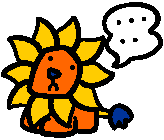
---------------------------------------------------- #62 ウールやシルクやダウンのどこがいけないんですか? ----------------------------------------------------
ウールのどこが悪いのでしょうか? 科学者たちは長年に渡ってメリ
ノ羊と呼ばれる非常にシワの多い羊を品種改良で作り出してきました。
シワが多ければ多いほどウールがたくさん取れるからです。しかし残念
なことに人間にとっての利益が上がることが羊にとってもメリットとな
るというわけではないのです。
羊はシワが多いほど汗も多くかくためにオーストラリアでは蝿蛆症に
かかりやすくなります。蝿蛆症とは、汗をかいた異常なほどシワだらけ
の羊の皮膚のひだの間にウジが寄生してしまうことで引き起こされるぞ
っとするような症状です。蝿蛆症への対策として、牧羊業者たちは羊に
対し麻酔も使わずにミュールズ手術(*1)と呼ばれる肛門付近の肉を削ぎ
落とす手術を施します(*2)。痛みと流血の止まらない傷口はそのまま放
置されます。
人間が干渉しなければ、羊は外気から自分の身を守るのに必要なだけ
のウールしか生やさないわけですが、科学者たちが品種改良を重ね、羊
をウールを生産するための奇形動物にしてしまったのです。
こうした羊たちは異常に毛が多いため(その重さはしばしば体重の半
分にも達します)夏の間は暑さというもう一つの過酷な試練にさらされ
ます。そのために命を落とすこともまれではありません。その一方では
オーストラリアだけでも、毎年100万頭の羊たちが毛を刈られた後に寒
さが原因で死んでいます。
生後数日もたたないうちに死んでしまう小羊の数はオーストラリアだ
けでも毎年約1000万頭にもなります。膨大な羊の数に対してその世話を
する人の数があまりにも少ないために羊を管理しきれないのがその一番
の原因です。
英国製のウールの27%は「スキン・ウール」、つまり、屠殺された羊
や子羊の皮を剥がして取られたウールです。
シルクは、どこがいけないのでしょうか? それはシルクを取るため
に、まだ生きているカイコの幼虫を包んでいる繭をゆでるというやり方
です。繭からカイコガが抜け出た後にシルクを取るより、この方法のほ
うが長いシルクを取れますが、カイコだって傷を負わされれば痛みを感
じたりもがいたりするのです。
ダウンはどこがいけないのでしょうか? 生きている鳥の羽毛をむし
りとる、というのが普通にとられているダウンの採取法です。怯える鳥
たちは足を縛られ、首をつかまれて、体中の羽毛を剥ぎ取られるのです。
もがき苦しむ水鳥たちは傷を負います。この試練が終わった後は他の犠
牲者たちと一緒に小屋に投げ込まれ、また羽毛をむしられる時期が訪れ
るのを待つのです。
獣医も水鳥の飼育者さえも「非常に残虐である」と認めているこの拷
問は、水鳥がわずか生後8週の時に開始されます。それが8週間ごとに
もう2、3回繰り返された後、水鳥たちは屠殺されます。殺された後に
羽毛をむしり取られる鳥たちは「運のいい」鳥と言えるでしょう。殺さ
れるのが先で羽をむしられるのがあとなのですから。 <M>
MT
訳注)*1. ミュールズ手術(Mules operation ):
綿羊の尻にウジがわくのを防止するために行なうひだの
部分の切除手術.
[J.H.W.Mules(1876-1946)オーストラリアの牧羊業者]
(リーダーズ英和辞典)
*2. 肛門付近に特にウジがたかりやすいので、この手術を施
してウジがたからないようにしている、ということです
が、この手術をしたところで、羊の身体の他の部分にウ
ジがたかることを予防できるわけではありません。
下記のHPには(英語ですが)こうした事情に関する詳
しい情報があります。よろしければ御参照下さい。
.........................
http://www.animalliberation.org.au/sheep.html......................... http://www.animalliberation.org.au/sheep.html2




-----------------------
#62 Anything wrong with wool, silk, down?
-----------------------
What's wrong with wool? Scientists over the years have bred a Merino sheep
which is exaggeratedly wrinkled. The more wrinkles, the more wool.
Unfortunately, greater profits are rarely in the sheep's best interests. In
Australia, more wrinkles mean more perspiration and greater susceptibility to
fly-strike, a ghastly condition resulting from maggot infestation in the
sweaty folds of the sheep's over-wrinkled skin. To counteract this, farmers
perform an operation without anesthetic called "mulesing", in which sections
of flesh around the anus are sliced away, leaving a painful, bloody wound.
Without human interference, sheep would grow just enough wool to protect
them from the weather, but scientific breeding techniques have ensured that
these animals have become wool-producing monstrosities.
Their unnatural overload of wool (often half their body weight) brings
added misery during summer months when they often die from heat exhaustion.
Also, one million sheep die in Australia alone each year from exposure to
cold after shearing.
Every year, in Australia alone, about ten million lambs die before they
are more than a few days old. This is due largely to unmanageable numbers of
sheep and inadequate stockpersons.
Of UK wool, 27 percent is "skin wool", pulled from the skins of slaughtered
sheep and lambs.
What's wrong with silk? It is the practice to boil the cocoons that still
contain the living moth larvae in order to obtain the silk. This produces
longer silk threads than if the moth was allowed to emerge. The silkworm can
certainly feel pain and will recoil and writhe when injured.
What's wrong with down? The process of live-plucking is widespread. The
terrified birds are lifted by their necks, with their legs tied, and then
have all their body feathers ripped out. The struggling geese sustain
injuries and after their ordeal are thrown back to join their fellow victims
until their turn comes round again. This torture, which has been described as
"extremely cruel" by veterinary surgeons, and even geese breeders, begins
when the geese are only eight weeks old. It is then repeated at eight-week
intervals for two or three more sessions. The birds are then slaughtered.
The "lucky" birds are plucked dead, i.e., they are killed first and then
plucked.
MT